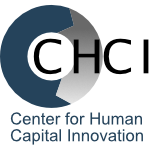Since Diversity, Equity, and Inclusion (DEI) are fundamental pillars shaping the ethos of modern workplaces, it’s important to ask if DEI creates transformative change.
This blog explores the methodologies and metrics for assessing DEI program effectiveness, including a detailed case study of PayPal’s innovative approach to economic equity. We’ll also get a glimpse of efforts at other organizations, providing a comprehensive view of how DEI strategies can yield valuable results.
Understanding the Impact of DEI: A Statistical Overview
DEI’s significance transcends compliance or ethical obligation; it’s a strategic imperative that drives organizational resilience, innovation, and growth. However, measuring the effectiveness of DEI programs poses a complex challenge, requiring a blend of qualitative and quantitative metrics to capture the full spectrum of its impact.
PayPal’s Pioneering Effort in Addressing Economic Equity
PayPal’s DEI strategy, championed by CEO Dan Schulman, integrates deeply into its corporate ethos, aiming to foster an inclusive culture. This comprehensive approach embraces diversity across a variety of demographics, ensuring everyone feels valued. PayPal’s commitment to DEI is highlighted by measures such as forming partnerships with Veteran Jobs Mission and AfroTech, achieving 100% pay equity in the U.S. for women and ethnic minorities, and supporting numerous Employee Resource Groups (ERGs). These efforts are central to PayPal’s business operations and the well-being of its employees, underscoring the company’s dedication to creating a community where diversity, equity, and inclusion are woven into the fabric of their corporate identity.
Reflecting on PayPal’s endeavors, it’s clear that their success aligns with current DEI research trends, underscoring the importance of equitable practices for organizational growth. This approach is detailed in The State of Diversity, Equity, and Inclusion Among Leading Organizations in North America, which dives deep into the current DEI landscape and effective strategies.
DEI Strategies from Other Organizations
- Walmart’s Program for Social Mobility focuses on creating equitable opportunities for its workforce by fostering a culture of empowerment and inclusion that reflects the diversity of the communities Walmart serves. Key strategies include: developing inclusive leadership, promoting diversity in hiring and promotions, and enhancing supplier diversity. This approach has led to improved retention rates and promotion opportunities, particularly for underrepresented groups.
- Schneider Electric’s Global-Local Pay Equity Framework adds value by ensuring fair compensation across its global workforce, addressing pay disparities, and promoting gender balance. This outlook fosters an equitable workplace while enhancing the company’s reputation as a preferred employer that attracts and retains top talent. By prioritizing pay equity, Schneider Electric strengthens its commitment to DEI, contributing to a more motivated and productive workforce.
- Shiseido’s Focus on Gender Parity underscores the impact of committed leadership and performance-linked DEI metrics, resulting in a notable increase in women leaders within the company.
- Netflix and Amazon demonstrate the effectiveness of fostering inclusive cultures and supporting Employee Resource Groups, emphasizing diversity as a critical component for business success.
Key Takeaways for DEI Program Evaluation
Evaluating the effectiveness of DEI programs requires a strategic approach, which should entail the following:
- Define Clear Objectives: Establish what DEI success looks like with measurable targets.
- Monitor and Adapt Regularly: Use metrics and feedback to track progress, identify areas for improvement, and adapt strategies accordingly.
- Commit Leadership: Ensure leaders are held accountable, actively champion, and receive resources for DEI efforts.
- Cultivate an Inclusive Culture: Create an environment where diversity is valued and all employees feel included and can fully contribute.
- Research Best Practices: Check out resources, including literature like the new book Inclusionomics, that provide insights on enhancing organizational culture and financial performance through diversity and inclusion practices.
The journey toward achieving meaningful DEI impacts is complex and multifaceted. PayPal’s success story, alongside insights from other leading organizations, provides a blueprint for integrating DEI into the core operational and strategic framework of businesses. These examples highlight the critical importance of setting clear goals, engaging leadership, and fostering an inclusive culture—underscoring DEI’s role as a key driver of organizational success.
We invite you to share your experiences and insights on DEI measures within your organization. How do you measure their effectiveness, and what impact have they had on your culture and operations? Leave a comment below, send us an email, or follow us on LinkedIn.



